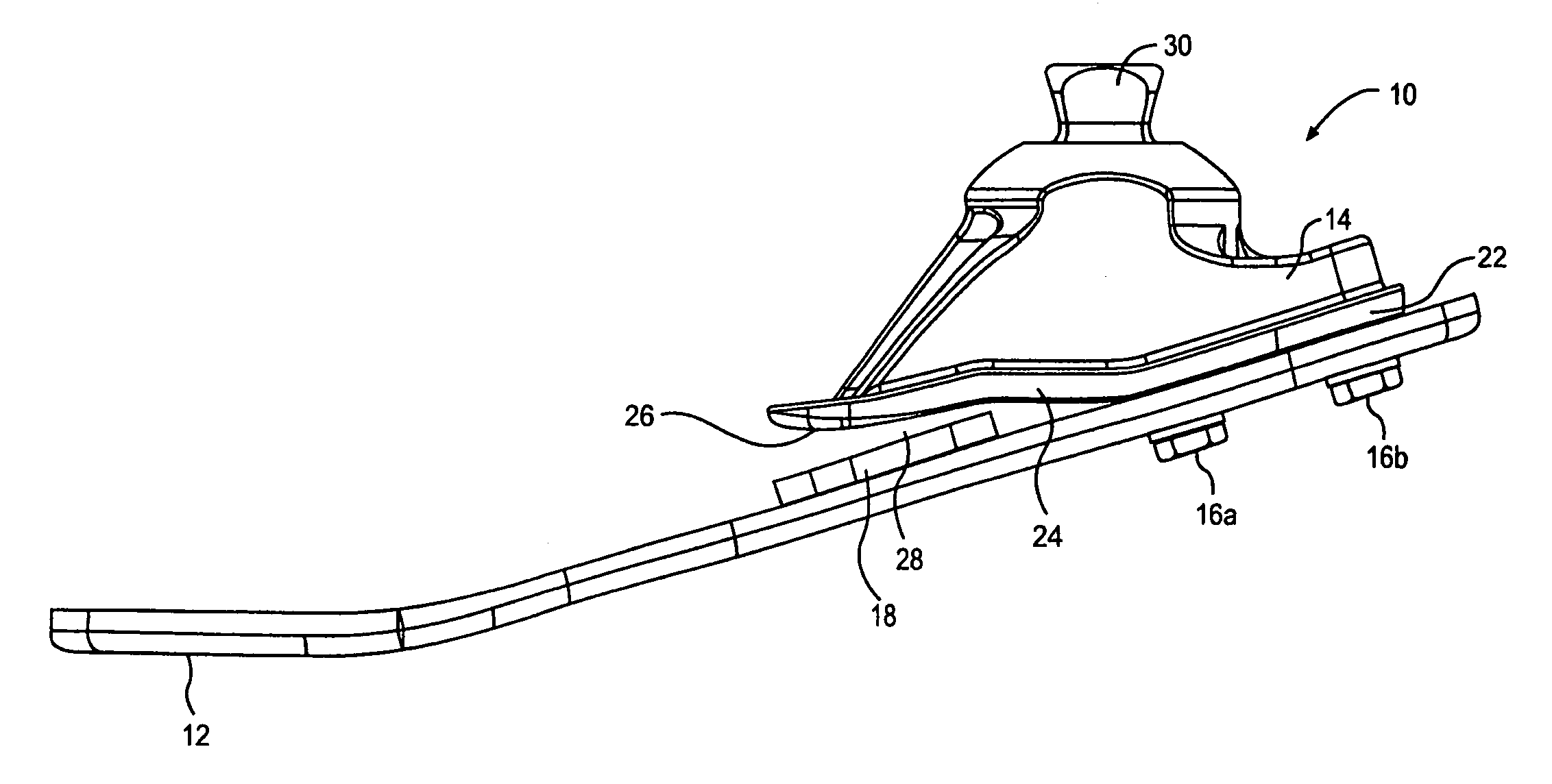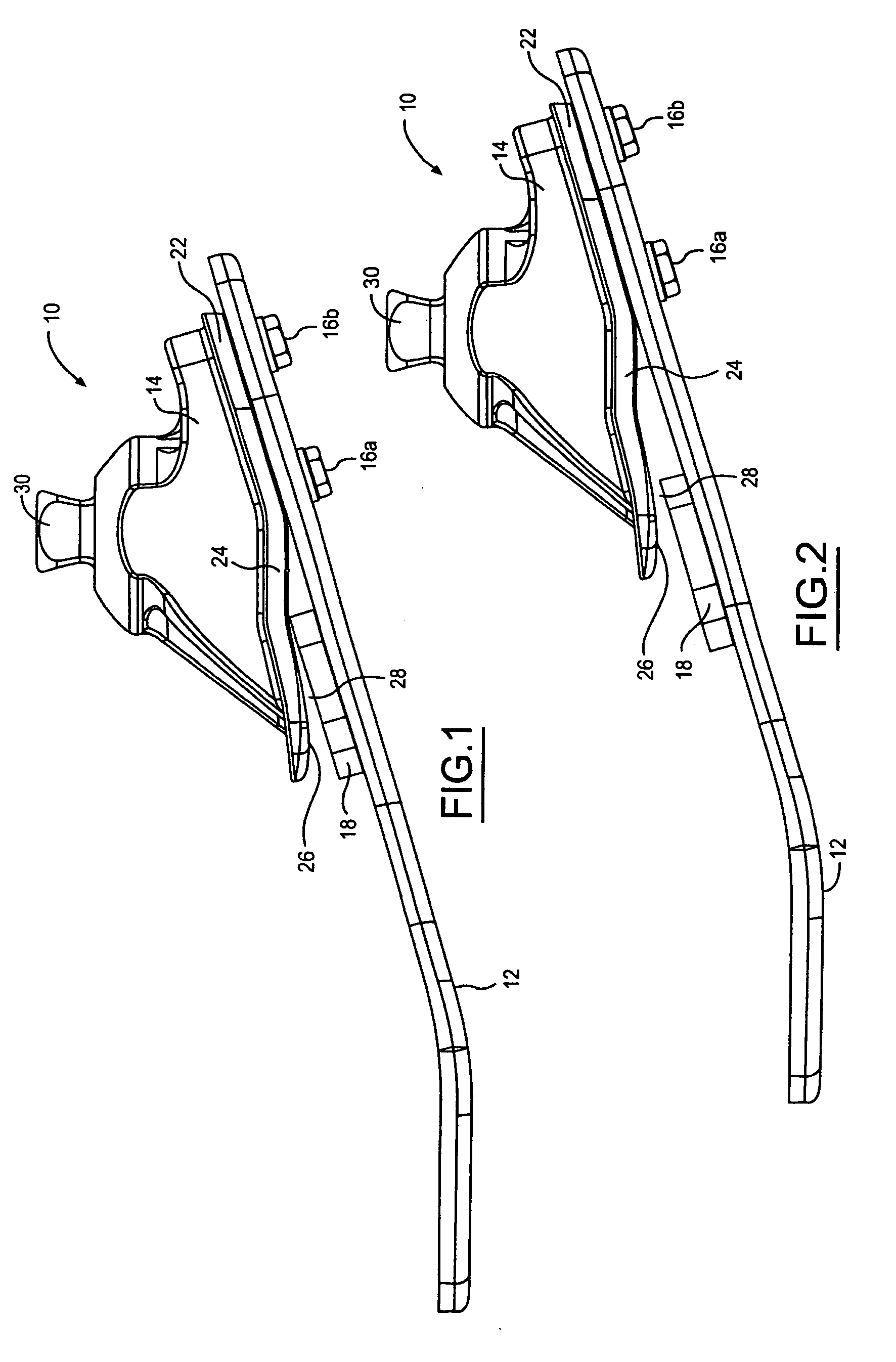Sub-malleolar non-articulating prosthetic foot with improved dorsiflexion
a non-articulating, foot technology, applied in the field of foot prostheses, can solve the problems of limited use, high cost and complexity of these devices, and the sole plate does not have enough flexibility to allow for a natural gait, so as to improve the dorsiflexion of the prosthetic foot, the effect of reducing the stiffness of the overall par
- Summary
- Abstract
- Description
- Claims
- Application Information
AI Technical Summary
Benefits of technology
Problems solved by technology
Method used
Image
Examples
Embodiment Construction
[0013] The present invention is directed to a prosthetic foot which is attachable to a leg prosthesis and which provides for a natural foot action. The prosthetic foot of the present invention includes a sole plate formed from a body of resilient material. The sole plate is elongated along an anterior and posterior axis, and the anterior portion of the sole plate defines the toe portion of the prosthetic foot and the posterior portion defines the heel portion of the prosthetic foot. An ankle member includes a planar portion that is rigidly affixed to the sole plate at the heel portion. The ankle member also includes an extension portion which is anterior of the planar portion. When the ankle member is affixed to the sole plate, the extension portion is spaced apart from the surface of the sole plate. The prosthetic foot also includes a resilient pad which is disposed in the space between the extension portion of the ankle member and the sole plate.
[0014] Referring now to FIG. 1, th...
PUM
 Login to View More
Login to View More Abstract
Description
Claims
Application Information
 Login to View More
Login to View More - R&D
- Intellectual Property
- Life Sciences
- Materials
- Tech Scout
- Unparalleled Data Quality
- Higher Quality Content
- 60% Fewer Hallucinations
Browse by: Latest US Patents, China's latest patents, Technical Efficacy Thesaurus, Application Domain, Technology Topic, Popular Technical Reports.
© 2025 PatSnap. All rights reserved.Legal|Privacy policy|Modern Slavery Act Transparency Statement|Sitemap|About US| Contact US: help@patsnap.com



